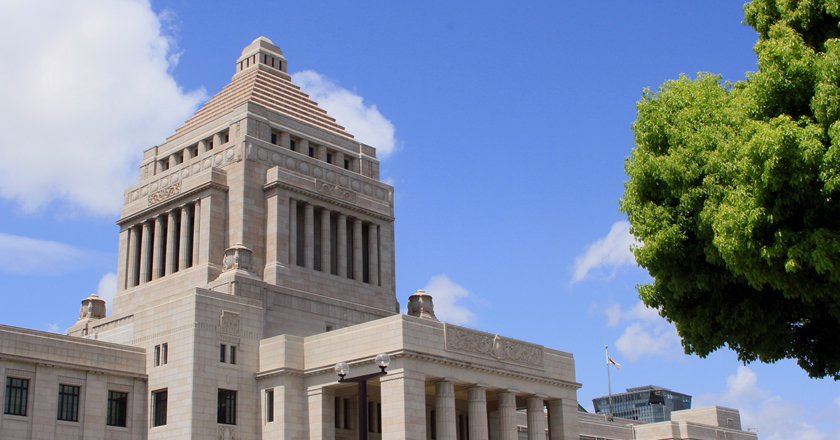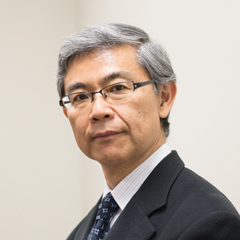Free Access and Supply System in Healthcare
What is often pointed out regarding the healthcare system is that there is a tradeoff between access, cost, and quality. Many countries are trying to balance the cost and quality by limiting access. For example, in the UK, which is based on the National Health Service, people cannot go to hospital because of a common cold but for an emergency illness or injury. First, they need to see a registered “family doctor”.
As you all know, it is different in Japan. As long as you have public health insurance, you can go to any hospital or clinic in Japan in principle, although there are some restrictions. Though this sounds beneficial to patients, it has led to permanent congestion in hospitals. If many people rush to hospitals for a cold, those who need emergency treatment will be in trouble. According to the Organization for Economic Cooperation and Development (OECD) Health Database (2015), the number of medical examinations per doctor per year in Japan was 5,385, the second highest among OECD countries after South Korea, and 2.3 times the OECD average of 2,295. We can see how busy Japanese doctors are.
One reason for this is that free access is allowed. Of course, if access is restricted, some people will not receive healthcare services. The United States, where many people do not have health insurance, is a typical example.
In healthcare, it is important to secure access, but the problem is how to do it. According to news reports on countermeasures against COVID-19 overseas, when people in the UK and Australia are suspected of being infected, they consult their family doctors first instead of going to hospital. In a technical term, the family doctors serve as the “gatekeepers”.
On the other hand, in Japan, there are clinics in the neighborhood that people often visit for a cold, but family doctors who serve as gatekeepers have not been developed and is far from sufficient, although the government is trying to popularize them. Of course, those who are in a serious condition need to be treated at a hospital immediately, but if there were a system whereby people who have symptoms of a cold or who are suspected to be infected consult their family doctor first, the situation may be a little different.
Access is a problem in terms of demand for healthcare, but there is also a problem in terms of supply. One of the characteristics of Japanese healthcare is a large portion of private medical institutions and freedom of commencement of practice. Basically, if you have a doctor’s license, you can open your own practice anywhere in Japan and get certified on your preferred medical specialization. As a result, the uneven distribution of doctors between regions, as well as medical specializations, have become problems. The numbers of obstetricians and pediatricians are insufficient.
Expensive medical equipment such as CT and MRI scanners can be freely introduced. According to OECD statistics, Japan has the highest number of such devices per capita, surpassing the United States (the number of MRIs per 1 million population in Japan: 51.7, OECD average: 15.9). Currently, an upper limit has been set for the number of hospital beds, as one medical resource, and it cannot be increased. However, Japan has the highest number of beds per capita in developed countries (per 1,000 population 13.2, OECD average: 4.7). Why is the number of beds for infectious diseases insufficient despite the large total number of beds in Japan?
Recently, the government has been working to improve the quality of healthcare in local communities by formulating regional healthcare plans, etc. aiming at making efficient use of medical resources. It is a necessary policy, but the reorganization of hospitals and the cooperation of various medical institutions have not progressed in reality because local governments such as prefectural governments have little enforcement power. Medical institutions have not cooperated sufficiently in taking countermeasures against COVID-19, with exceptions in some areas.
Some healthcare problems that I introduced above are not new at all. It has been pointed out for decades, but fundamental solutions have been postponed. The problems become more apparent in this kind of critical situation. At the moment, it is urgent to treat infected patients, but we need to take this opportunity to reconsider our medical practice. All people are on one ship called medical care. Should the ship sink, everyone will be in trouble. How can we protect the ship?
Non-regular workers and women suffer more damage from COVID-19.
Non-regular workers, freelancers and women have suffered more damage from the spread of the COVID-19. This is because they worked mainly in the retail and wholesale industries, accommodation and restaurant industries. COVID-19 has also revealed problems and contradictions in the employment system.
The social security system in Japan is based on social insurance. It consists of pension insurance, medical insurance, unemployment insurance, etc. A fundamental problem with social security in Japan is that a large and increasing number of people are not covered by social insurance despite the name “universal health insurance”. The National Pension and the National Health Insurance, which is operated by local governments, allow self-employed people and freelancers to contribute, but 30 to 40% of them have not paid full premiums owing to the regressive nature of the premiums.
The problems are employment insurance and industrial accident compensation insurance. There are conditions to get the employment insurance such as the prescribed working hours per week is at least 20 hours, and not all non-regular employees are covered. Unlike pensions and health insurance, freelancers are not covered by the employment insurance.
In principle, industrial accident compensation insurance covers part-time workers, but it does not cover those to whom the Labor Standards Act does not apply (sole proprietors, etc.). However, some sole proprietors are exceptionally allowed to join the insurance scheme.
In any case, the two insurances related to employment and labor are not friendly to self-employed people and freelancers. Compared to self-employed people, non-regular employees are covered by social insurance, but not all of them. Significant inequality and discrimination are inherent in the social security system in Japan depending on the occupation.
Besides, the problem is serious. Very few measures have been taken for human resource development such as childcare, family, and education measures that are not covered by insurance systems. Against the background of an increasingly globalized society and knowledge-based economy, unless people with low wages and unstable jobs are provided with education and vocational training, disparities will widen and economic growth will decline.
It was easy to raise social insurance premiums in countries centered on social insurance, but it was difficult to raise taxes, and there was a tradition that family members take care of children, so investments related to human resource development could not be enhanced. It can be said that social insurance based on the assumption of a single income from men and regular employment has fallen into institutional fatigue. The problem is serious especially in Japan because of the rapid increase of non-regular workers and discrimination between genders.
What is administrative governance of the government?
Finally, the issue of the government establishing systems such as social security is considered.
Lack of governance is often pointed out when incidents or scandals occur in national and local governments or private companies. You may hear the term “governance” in various situations, but what exactly is it?
In Japanese, it is generally translated as “administration” or “process of administration”. Lexicographically, it is derived from the Latin and Greek words that mean “steer”. In other words, it means to control movement and guide it in a certain direction, and government is a representative of that.
I have a course “Governance Studies” at my school. Governance is defined as “solving a problem” in the course and the theory, methodology, and measures to solve the problem are discussed. When it comes to this topic, what is the most important thing to solve the problem?
It is to analyze what the problem is and why the problem is occurring. Let’s take the problem of child poverty as an example. We consider what poverty is, how it is, and how problematic it is. Then, we consider the causes of poverty. What is the biggest cause of many possible reasons such as parents’ condition, education, people’s sense of equality, and related social security? Of course, this is not an easy problem. That is why child poverty cannot be solved quickly.
You might think it is natural to think about problems and their causes when we discuss policies. However, it is not that easy in reality. Even if you can infer the cause, it cannot always be proved to be true.
Every policy has different stakeholders, and it is not easy to coordinate their interests. There are various opinions for and against cash benefits and off-work compensation benefits on the countermeasures against COVID-19, too, and it is difficult to reach consensus in reality. Therefore, policymakers, whether at the national or local level, try to propose policies that are likely to be agreed upon by relevant parties rather than presenting policies and measures that should be implemented actually. However, it will be difficult to solve the problem with such policies.
The rule of democracy is that politicians chosen by the people in an election finally determine the policies. However, before that, we need scientific analysis and examination based on data and facts and consensus building to coordinate different opinions. I believe that what the current policy process in Japan lacks most is scientific analysis and examination. The importance of evidence-based policy making has recently been pointed out, but I think it has not actually been implemented in many fields. Although not mentioned here, the evidence for several COVID-19 countermeasures is also being challenged.
Though I stated that scientific analysis of problems is lacking in Japan, there are exceptions. One of them is the TEPCO Fukushima Nuclear Power Plant Accident Investigation Committee (established in December 2011) established in the Diet based on a special law after the Great East Japan Earthquake. The investigation committee, composed of experts, conducted various investigations and analyses, and pointed out the problems of the nuclear-related organizations in the government as one of the factors behind the escalation of the accident.
It is necessary to conduct scientific analyses to comprehensively review COVID-19 countermeasures after the recent outbreak is resolved. Even though it was not possible to prevent the entry of infectious disease, it is necessary to conduct a level-headed analysis of why the infection spread, why it occurred in medical facilities, and why it took time to secure the employment and livelihood of those who lost their jobs. The important is not to find a criminal but to clarify the facts and make use of them for the future. I believe that it is the kind of governance we need.
*The information contained herein is current as of May 2021.
* The contents of articles on Meiji.net are based on the personal ideas and opinions of the author and do not indicate the official opinion of Meiji University.
* I work to achieve SDGs related to the educational and research themes that I am currently engaged in.
Information noted in the articles and videos, such as positions and affiliations, are current at the time of production.


